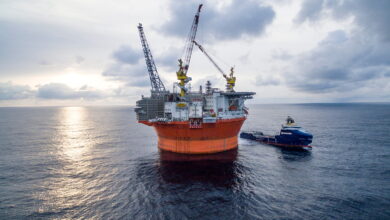Open-architecture platform will lead to feasible automated well construction system
By Joanne Liou, editorial coordinator
While the momentum for drilling automation is evident in the industry, translating the concept into an open-architecture control system is key to realizing true automated drilling. It is essential to have the flexibility of an open-architecture framework both at the bottom of the hole and at surface, Tony Pink, VP automated drilling applications at National Oilwell Varco (NOV), said. The interfaces need to be developed so that “all the service companies can plug their drilling tools into the bottom,” he explained during a presentation on 6 March at the 2012 IADC/SPE Drilling Conference in San Diego, Calif.

Mr Pink emphasized the criteria needed in the design of an automated well construction system, such as being economically viable in the unconventional market and having a control system that is the same across all rig types. The new rig control being developed at NOV aims to facilitate automation of drilling-related activities by providing a single platform for automation solutions, including making connections, drilling optimization, wellbore stability and rig maintenance procedures.
Service companies, operators, drilling contractors and even universities would then be potential deliverers of applications, or “apps,” for the system, such as downhole autodriller, vibration control, real-time torque and drag data, managed pressure drilling and wellbore stability. NOV plans to provide a software development kit for other companies and groups to be able to write apps for the system, Mr Pink explained. “We’ll then test those apps against other apps on a test rig so we understand that there are no conflicts between the different parts of the system.”
The focus of the system is on the overall well construction process – putting the well in the right place at the right time to achieve full benefits in operational efficiency. Rather than focusing on improving drilling time, the goal is to optimize well construction by improving performance and increasing consistency. To this end, safely prioritizing tasks will be a critical capability of the system. “It’s very important for us to build a system where the control system understands the prioritization,” Mr Pink said. “If we are getting two independent RPM values, we’re trying to mitigate stick-slip or we’re trying to improve hole cleaning. Which one takes priority?” Ultimately, if the system gets confused, then the human driller will have to step in.
Instead of catering the system design to Gulf of Mexico drillships or Norwegian platforms, the first system is being built for the low-cost, onshore unconventional market in the US. “That is a very tough market to make a jump in automation that is economically viable,” Mr Pink stated. “If we can do it in US land and we can make it economically sensible to do automation, then we can do it anywhere.”
Addressing the progress of the developing system, Mr Pink said the downhole autodriller “app” is being finalized and is expected to be tested in cooperation with Chesapeake in the Marcellus Shale within the next month. “That will be the first time that we take downhole data to directly control surface machines,” he said.




